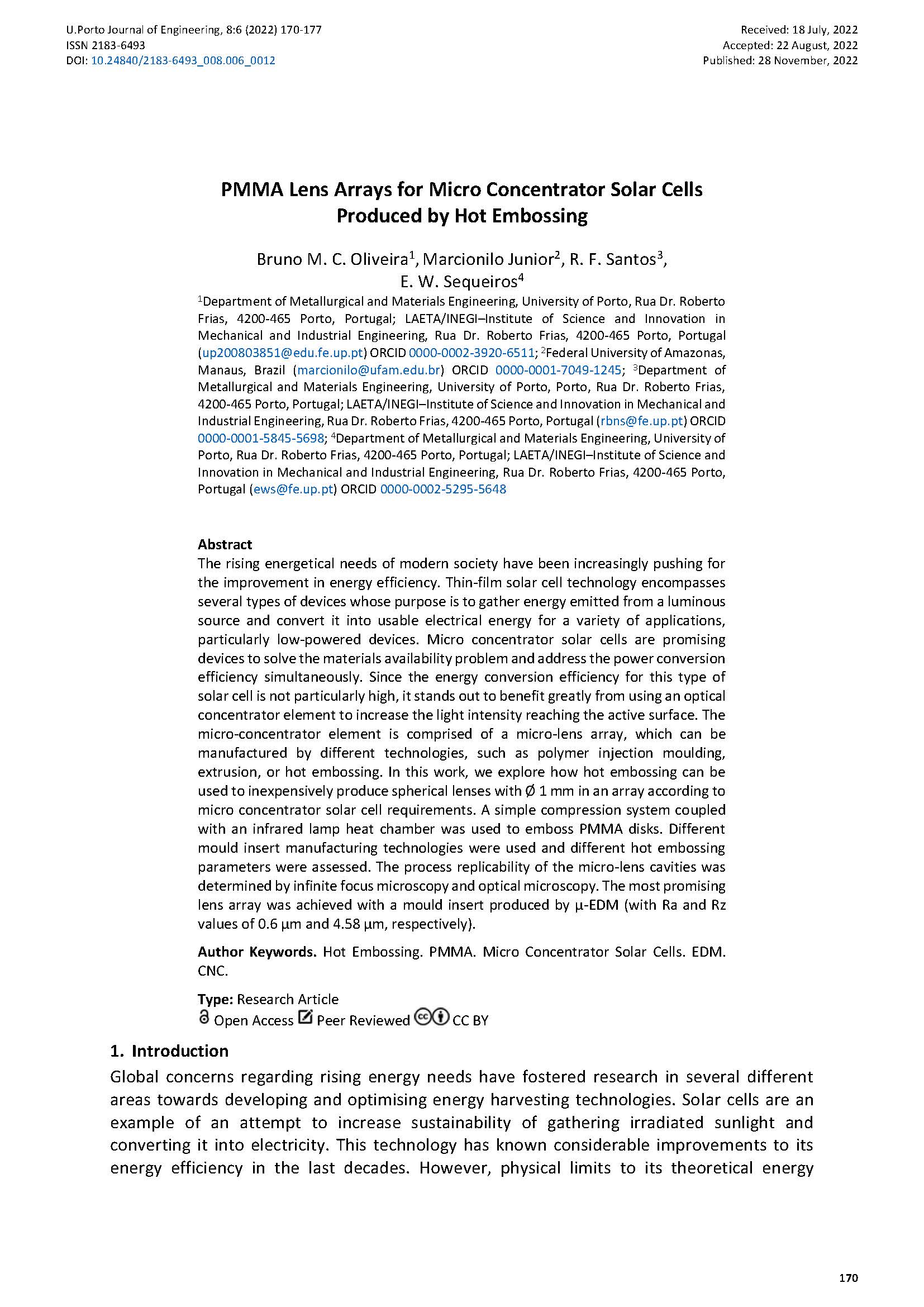PMMA Lens Arrays for Micro Concentrator Solar Cells Produced by Hot Embossing
Main Article Content
Abstract
The rising energetical needs of modern society have been increasingly pushing for the improvement in energy efficiency. Thin-film solar cell technology encompasses several types of devices whose purpose is to gather energy emitted from a luminous source and convert it into usable electrical energy for a variety of applications, particularly low-powered devices. Micro concentrator solar cells are promising devices to solve the materials availability problem and address the power conversion efficiency simultaneously. Since the energy conversion efficiency for this type of solar cell is not particularly high, it stands out to benefit greatly from using an optical concentrator element to increase the light intensity reaching the active surface. The micro-concentrator element is comprised of a micro-lens array, which can be manufactured by different technologies, such as polymer injection moulding, extrusion, or hot embossing. In this work, we explore how hot embossing can be used to inexpensively produce spherical lenses with Ø 1 mm in an array according to micro concentrator solar cell requirements. A simple compression system coupled with an infrared lamp heat chamber was used to emboss PMMA disks. Different mould insert manufacturing technologies were used and different hot embossing parameters were assessed. The process replicability of the micro-lens cavities was determined by infinite focus microscopy and optical microscopy. The most promising lens array was achieved with a mould insert produced by μ-EDM (with Ra and Rz values of 0.6 μm and 4.58 μm, respectively).
Downloads
Article Details

This work is licensed under a Creative Commons Attribution 4.0 International License.
Authors who publish with this journal agree to the following terms:
- Authors retain copyright and grant the journal right of first publication with the work simultaneously licensed under a Creative Commons Attribution License that allows others to share the work with an acknowledgement of the work's authorship and initial publication in this journal.
- Authors grant the journal the rights to provide the article in all forms and media so the article can be used on the latest technology even after publication and ensure its long-term preservation.
- Authors are able to enter into separate, additional contractual arrangements for the non-exclusive distribution of the journal's published version of the work (e.g., post it to an institutional repository or publish it in a book), with an acknowledgement of its initial publication in this journal.
- Authors are permitted and encouraged to post their work online (e.g., in institutional repositories or on their website) prior to and during the submission process, as it can lead to productive exchanges, as well as earlier and greater citation of published work (See The Effect of Open Access).

